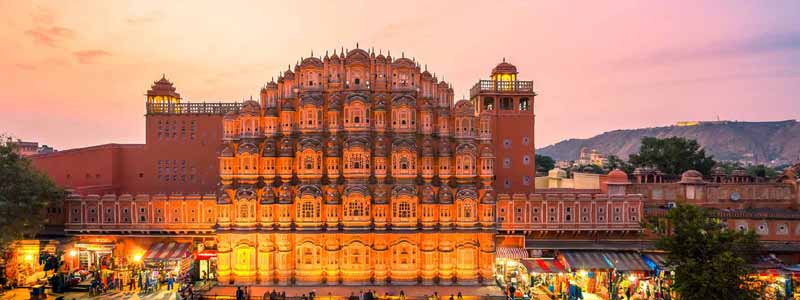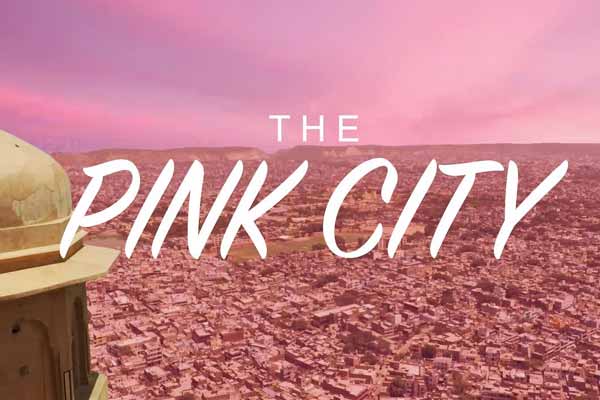What Makes Jaipur the Pink City, the capital city of the Indian state of Rajasthan, is often referred to as the “Pink City” due to its distinct pink-colored architecture and buildings. The city’s nickname originates from a historical event and its association with hospitality.
The story goes back to 1876 when Maharaja Sawai Ram Singh II, the ruler of Jaipur at the time, decided to paint the entire city in pink to welcome the Prince of Wales and future King Edward VII during his visit to India. Pink is traditionally considered a color of hospitality and welcome in Rajput culture. The Maharaja wanted to create a grand and welcoming atmosphere for the royal guest and to leave a lasting impression on him.
As a result, many buildings and structures in the city were painted in shades of terracotta pink, giving Jaipur its unique and uniform appearance. This distinctive pink color scheme has been maintained over the years as a part of the city’s heritage and identity Jaipur Attractions.
The tradition of painting buildings pink has been preserved, and today, the architecture of Jaipur continues to showcase this characteristic color, making it a major tourist attraction and earning it the nickname “Pink City.” The pink buildings, combined with the city’s rich history, bustling markets, and grand palaces, contribute to Jaipur’s unique charm and appeal Jaipur Tour Packages.

Jaipur History
Jaipur, the capital city of Rajasthan, India, boasts a rich history that dates back to the early 18th century. Founded in 1727 by Maharaja Sawai Jai Singh II, a visionary ruler of the Kachwaha Rajput clan, the city was designed with meticulous planning and precision Jaipur Tourism.
Jai Singh II was not only a skilled warrior but also a keen astronomer and mathematician. He established Jaipur as a new capital to replace the old city of Amber. The city’s layout was based on the principles of Vastu Shastra (Indian architecture) and the grid system, with well-organized streets, squares, and markets.
One of the most remarkable features of Jaipur is its distinct pink-colored architecture, which earned it the moniker “Pink City.” In 1876, Maharaja Sawai Ram Singh II had the entire city painted pink to welcome the Prince of Wales, creating an enduring symbol of hospitality What Makes Jaipur the Pink City.
Jaipur’s historical significance is also reflected in its majestic forts and palaces. The Amber Fort, a UNESCO World Heritage Site, stands as a testament to the region’s royal legacy, blending Rajput and Mughal architectural styles. The City Palace showcases a captivating blend of Rajasthani, Mughal, and European influences, while the Hawa Mahal, or “Palace of Winds,” is a stunning facade that allowed royal women to observe street festivities while remaining concealed Jaipur Day Tours.
Throughout its history, Jaipur has remained a center of culture, art, and commerce. The city’s bustling bazaars, including the renowned Johari Bazaar and Bapu Bazaar, offer an array of handicrafts, textiles, and jewelry. Its annual festivals, such as the Jaipur Literature Festival and the Gangaur Festival, celebrate the city’s vibrant cultural heritage What Makes Jaipur the Pink City.
Jaipur’s captivating history, from its strategic foundation to its architectural marvels, continues to allure travelers and scholars, providing a vivid glimpse into Rajasthan’s royal past and timeless charm.
Jaipur Architecture
Jaipur’s architecture is a captivating fusion of history, culture, and intricate design, making it a unique and enchanting destination. The city’s architectural landscape is a reflection of its royal heritage, with each building telling a story of Rajasthan’s rich past.
At the heart of Jaipur’s architecture is the City Palace, a sprawling complex that showcases a blend of Rajput, Mughal, and European architectural styles. The palace’s courtyards, palatial halls, and museums offer a glimpse into the opulent lifestyle of the royals. The Hawa Mahal, with its iconic honeycomb facade, is an architectural marvel that allowed royal women to observe street life while maintaining their privacy What Makes Jaipur the Pink City.
The Amber Fort, perched atop a hill, boasts stunning architecture that seamlessly integrates with the natural surroundings. Its ornate gates, grand courtyards, and intricate marble work exemplify the architectural prowess of the Rajput era. The Jal Mahal, a palace in the middle of Man Sagar Lake, is a symphony of Rajput and Mughal styles, creating a picturesque setting.
The Jantar Mantar, an astronomical observatory and a UNESCO World Heritage Site, is a testament to Maharaja Jai Singh II’s scientific acumen. Its massive instruments, designed with precision, were used to study celestial movements.
Jaipur’s bazaars, like the Johari Bazaar and Bapu Bazaar, are as much a part of its architecture as its palaces. The bustling markets are a showcase of traditional Rajasthani architecture, with vibrant colors, intricately carved facades, and narrow alleys filled with shops.
The Pink City’s planning itself is an architectural marvel. Laid out in a grid pattern with wide streets and orderly blocks, it reflects Maharaja Jai Singh II’s vision and understanding of urban planning.
In modern times, Jaipur’s architecture continues to evolve while preserving its heritage. Contemporary structures like the Birla Mandir and Jawahar Kala Kendra integrate modern elements with traditional designs, demonstrating the city’s architectural adaptability What Makes Jaipur the Pink City.
In essence, Jaipur’s architecture is a captivating blend of history, artistic expression, and cultural significance, making it a living testament to Rajasthan’s glorious past and its enduring legacy.
Things to do in Jaipur – the Pink city of Rajasthan
Jaipur, often referred to as the “Pink City,” offers a multitude of experiences that capture the essence of Rajasthan’s rich history, vibrant culture, and architectural marvels. From majestic forts to bustling markets and cultural festivals, there are plenty of things to do in this enchanting city.
Visit Amber Fort: Start your Jaipur journey with a visit to the magnificent Amber Fort. Perched on a hill, this UNESCO World Heritage Site is known for its grand architecture, intricate mirror work, and breathtaking views. You can either hike up to the fort or take an elephant ride for a regal experience.
Explore City Palace: Immerse yourself in the opulence of the City Palace, a sprawling complex that houses museums, courtyards, and ornate palaces. The blend of Rajput, Mughal, and European architecture is truly captivating.
Admire Hawa Mahal: The iconic “Palace of Winds” is a must-visit for its unique facade with hundreds of windows. Built to allow royal women to observe street life, its intricate latticework and architecture are a sight to behold What Makes Jaipur the Pink City.
Marvel at Jantar Mantar: Discover the astronomical prowess of Maharaja Jai Singh II at the Jantar Mantar observatory. The massive instruments, meticulously designed, showcase the scientific acumen of the era.
Discover Nahargarh Fort: Enjoy panoramic views of the city from Nahargarh Fort, perched on the Aravalli hills. The fort’s architecture and serene surroundings make it a popular spot for both tourists and locals.
Visit Jal Mahal: Admire the unique architecture of Jal Mahal, a palace situated in the middle of Man Sagar Lake. While you can’t enter the palace, the view from the banks is picturesque.
Explore Albert Hall Museum: Dive into Rajasthan’s history and art at the Albert Hall Museum. The Indo-Saracenic architecture and the diverse collection of artifacts are captivating.
Visit Birla Mandir: The Birla Mandir, also known as the Laxmi Narayan Temple, is a modern architectural marvel made of white marble. It’s a serene place for spiritual reflection.
Jaipur offers a captivating blend of history, architecture, and cultural experiences that cater to a diverse range of interests. Whether you’re a history enthusiast, a food lover, a shopper, or simply seeking to immerse yourself in Rajasthan’s rich cultural heritage, the What Makes Jaipur the Pink City has something for everyone.
